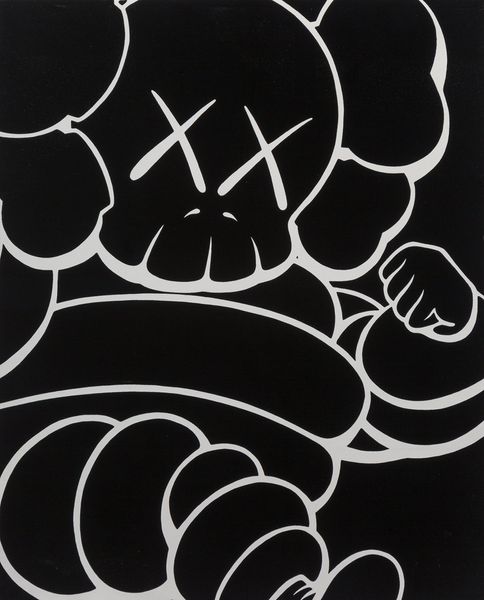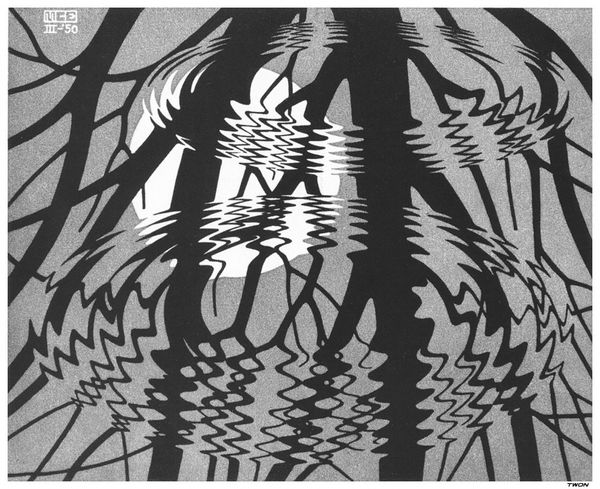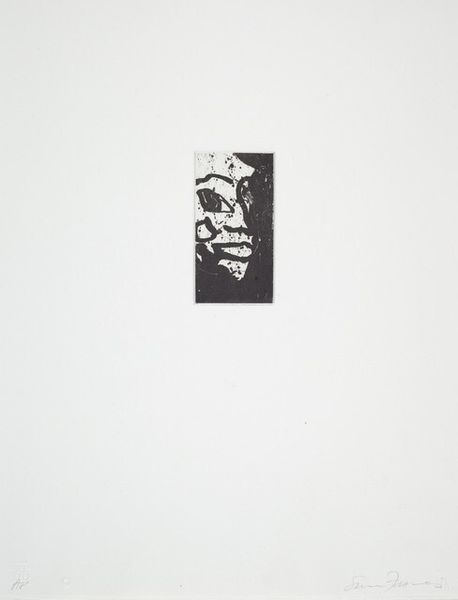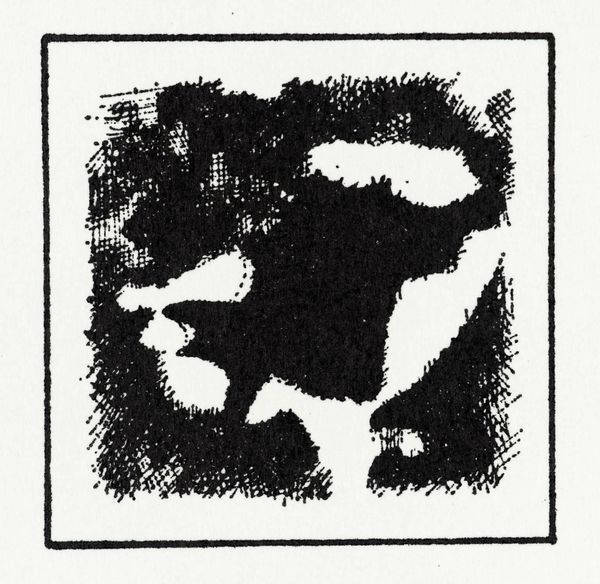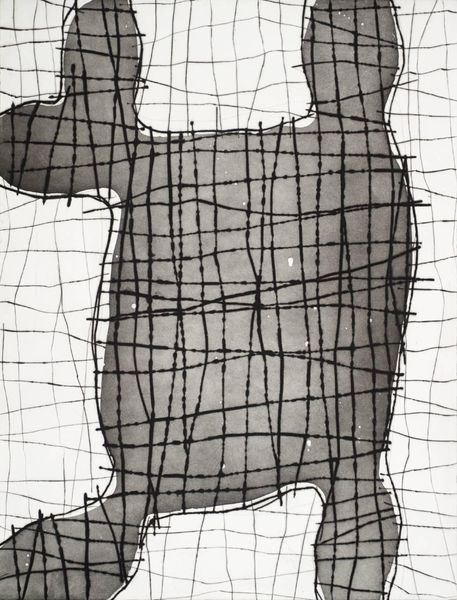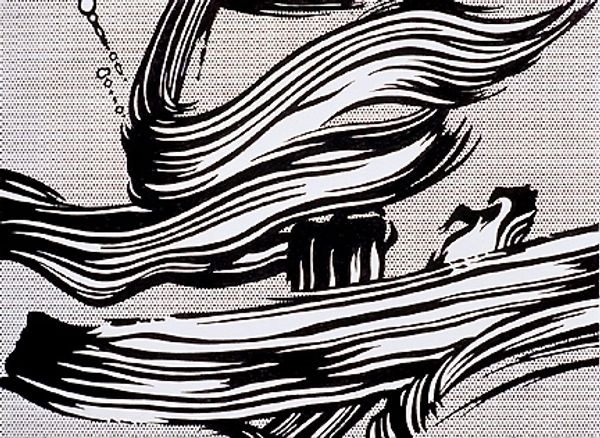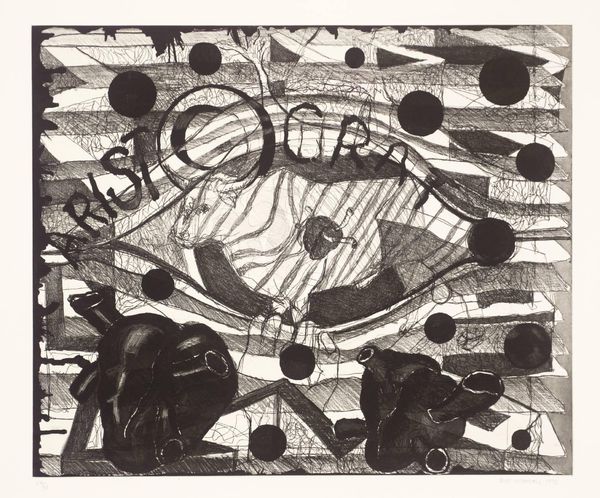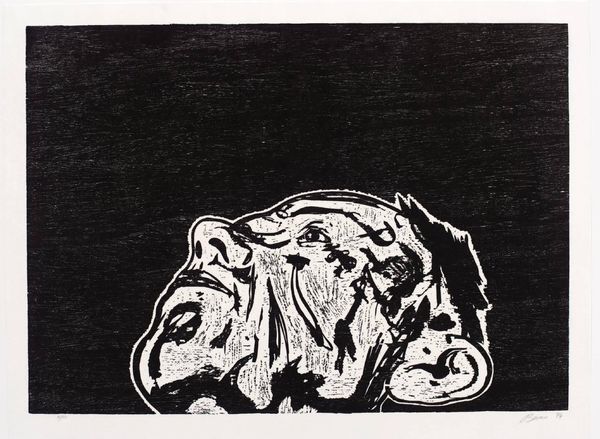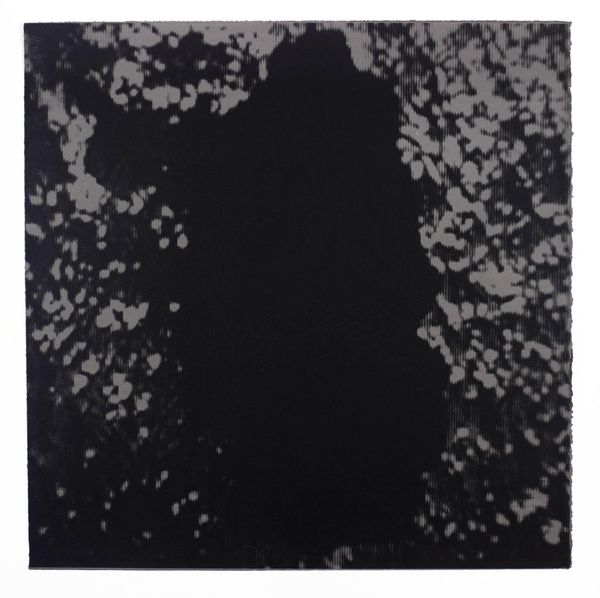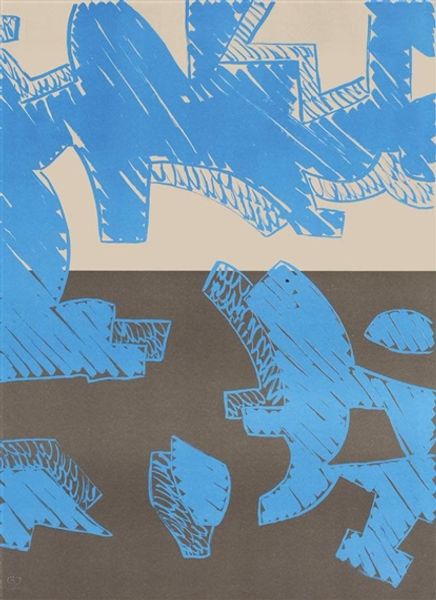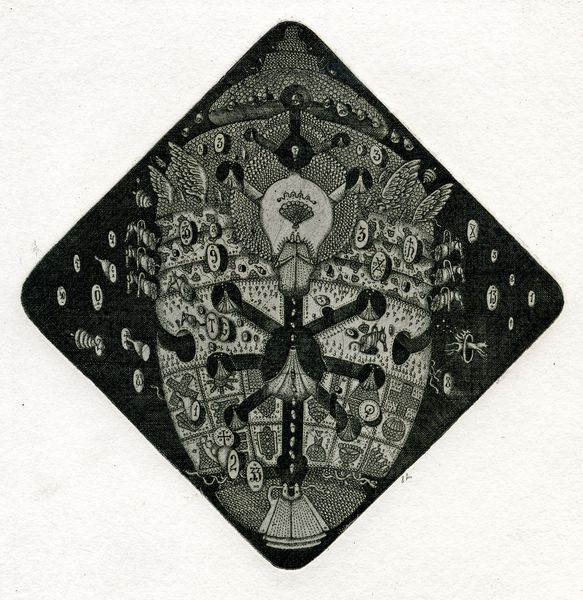
Dimensions: support: 1219 x 1219 mm
Copyright: © The estate of Patrick Caulfield. All Rights Reserved, DACS 2014 | CC-BY-NC-ND 4.0 DEED, Photo: Tate
Curator: Here we have Patrick Caulfield’s "Black and White Flower Piece," a striking image in the Tate collection. Editor: It’s so stark, so graphic! Like a still life glimpsed through prison bars…or maybe stylish tilework? Curator: The grid is certainly prominent. Think of it as a framework, almost like stained glass without the color, emphasizing the contrast between the floral arrangement and its surroundings. Editor: And those flowers, rendered so flat and bold, they’re not exactly romantic, are they? More like… emblems of beauty, stripped down to their essence. Curator: Indeed. Caulfield often played with the symbolism of everyday objects, transforming them into something iconic, even a little detached. The high contrast emphasizes form over emotion. Editor: Still, I keep coming back to that grid. It contains, but it also emphasizes the unruly, organic burst of the flowers. Curator: A tension that really defines the piece, and perhaps our own relationship with beauty itself. Editor: Yes, something to ponder as we move on, I suppose.
Comments
tate about 2 months ago
⋮
http://www.tate.org.uk/art/artworks/caulfield-black-and-white-flower-piece-t05853
Join the conversation
Join millions of artists and users on Artera today and experience the ultimate creative platform.
tate about 2 months ago
⋮
This painting was executed during Caulfield’s last term at the Royal College of Art, London (attended 1960-3). At the time, perhaps influenced by Jasper Johns (born 1930), whose paintings of flags and targets of the 1950s had stressed the physical reality, or object nature, of the work as being of equal value to its surface image, art students were particularly interested in using everyday objects as the starting point for their paintings. In common with his contemporaries, such as David Hockney (born 1937) who was studying in the year above him at the Royal College, Caulfield was taking his imagery from the world of the familiar, commenting in 1967 that ‘what we call inspiration results from a careful sifting of everyday experience’ (quoted in Patrick Caulfield: Paintings 1963-81, p.13). His early paintings used repeated patterns derived from such everyday objects as a soap packet, tartan fabric and a simple grid. In 1962 he incorporated structures, composed of strips of wood built into three dimensional grids resembling a garden trellis, into the surface of several paintings. The grids were surmounted by a cut-out image placed in the centre. Caulfield regarded these as unsuccessful and discarded them. Partly as a reaction against the dominant American movements of Abstract Expressionism and Pop Art, Caulfield looked to the work of European Cubists Juan Gris (1887-1927) and Fernand Léger (1881-1955) for inspiration. In such paintings by Léger as Still Life with a Beer Mug 1921-2 (Tate T02035), flat, monochromatic surfaces and surface patterning emphasise the decorative aspects of the image. In the 1960s Caulfield established his trademark style combining Cubist decoration with the more contemporary methods of sign-making and poster design. The grid background provided an early solution for juxtaposing an illusionistic image with a flat background and combining abstraction with figuration in one work. Two contemporaneous black and white paintings made on hardboard were the first works in which the artist felt he was able successfully to achieve this. These are Black and White Flower Piece and Engagement Ring (De Beers Central Selling Organisation, London).
